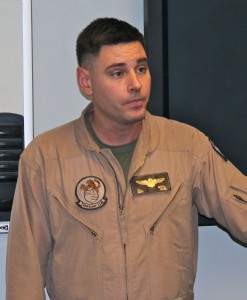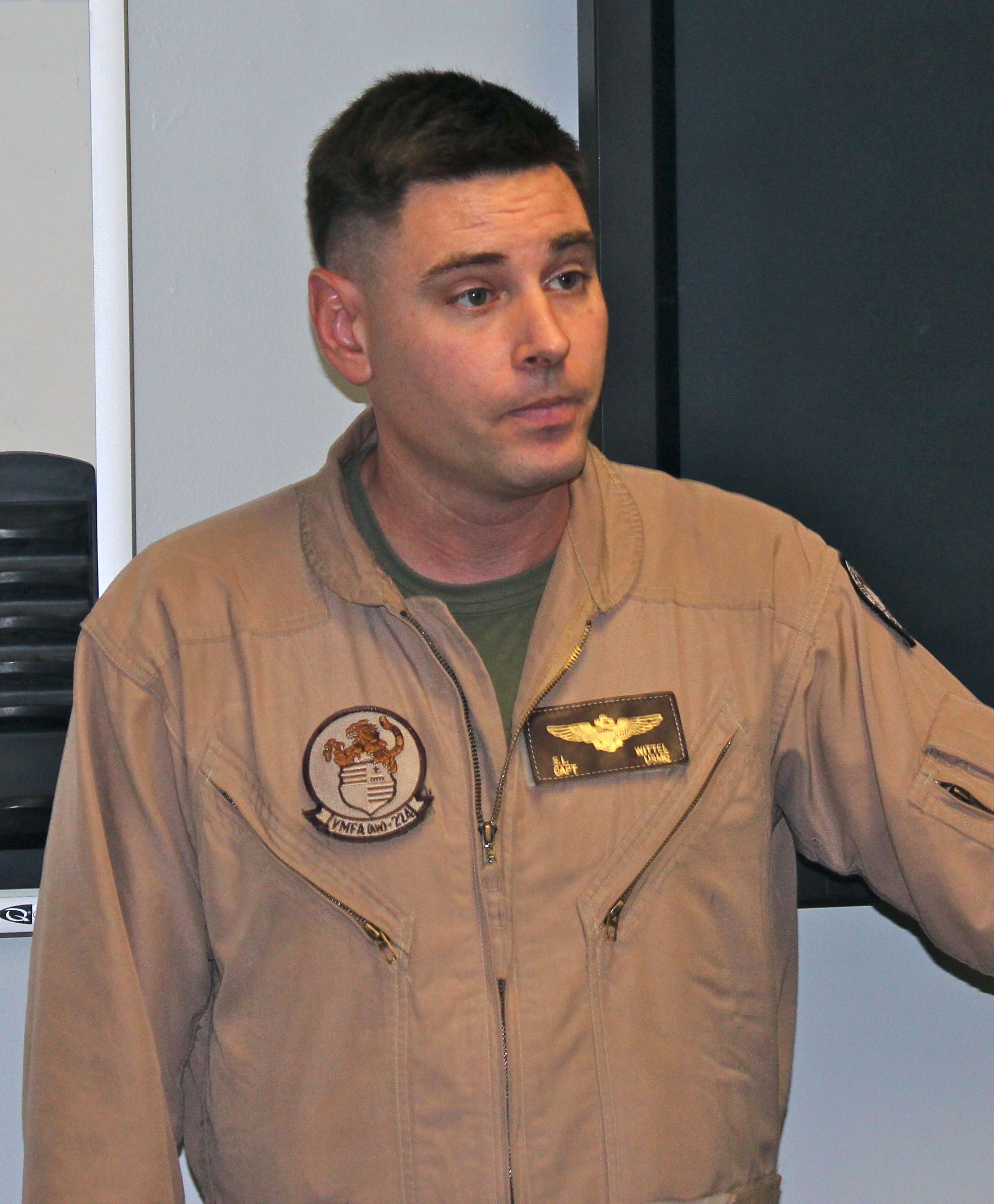09/04/2011 During the recent exercises in North Carolina which occurred as Hurricane Irene was unfolding, Captain Wittel of the Marine All Weather Fighter Attack Squadron 224, stationed at Marine Corps Air Station Beaufort, SC discussed those exercises and the transition to the F-35.
We have posted a series of videos, which captured the aviator’s comments, but will summarize some of the key elements in this piece.
https://sldinfo.com/the-usmc-approach-to-close-air-support/
https://sldinfo.com/a-usmc-f-18-pilot-discusses-the-transition-to-the-f-35/
https://sldinfo.com/shaping-an-economy-of-force-a-usmc-f-18-pilot-comments-on-the-f-35b/
https://sldinfo.com/the-f-35b-and-the-way-ahead-as-seen-by-a-usmc-f-18-pilot/
The Exercise
Initially, we brought six aircraft up here. Normally, we have 12 jets in a squadron but we brought up about half our squadron, most of our air crew, and then a maintenance staff of about 30 to 35, Marines to support the maintenance operations we have here
At Cherry Point, we are mostly hot pitting. We’re bringing our aircraft here either pre-flight or post flight to the hot pits with our marines out there and we’ll hot fuel.

The USMC Approach to Close Air Support (CAS)
We are the lead when it comes to close air support. And creating the syllabus and the baseline for the joint community, Marine Corps is the lead agency. So we define a lot of those guidelines and how tasks are going to be conducted.
All officers and all enlisted will go through computer instruction initially at the basic school for officers and then MCT for marines, which trains every officer basically to be platoon commander or have that knowledge base.
http://www.youtube.com/watch?v=ONZtQOVesOY
And every Marine is trained as a rifleman.
What that gives you is a connection to your ground brethren. When you’re supporting from the air, you understand that ground scheme maneuver or how they operate….
For the USAF, you are trained for the CAS role as a specialist and start out as a radio man or they start out in some support role. And as they gain rank and experience, they move into the JTAC qualification.
They have no connection with infantry. They are assigned to army units as an attachment to that army unit. So whereas marines are taken from marines, east coast aviators coming from Buford, or from Cherry Point here, will go to Camp Lejeune or possibly to Camp Pendleton or 29 Palms and support their brethren on deck.
An example, the company commander I worked with, I went through the basic school with him. I knew him personally. So I’m supporting him as his FAC, someone I know personally and have a connection with.
And that’s a difference between the USAF and the Marine Corps approach. We have a direct connection with our ground forces.
We have an intrinsic understanding of what that ground force commander is thinking in a whole battle concept, and how to utilize air in conjunction with your ground fires.
On the Experience of Manned Versus Unmanned Assets in Afghanistan
Working with both unmanned assets and manned assets in Afghanistan, what I can tell you is the ability of the ground forces to have a discussion with your pilots allows that pilot to support the ground force.
If it’s in a mission that’s a multi-sensor intelligence reconnaissance or ISR, Intelligence Surveillance and Reconnaissance, that ability to have an aviator that’s there and who understands what I’m looking for, and to feed that information to me real time is a maneuver element….
At times we don’t always have the ability to get the video feed coming off your unmanned assets. Whether it is a Predator asset, whether it is a Scan Eagle asset, some of the capabilities required to use the data are very heavy and you can’t use them when you’re maneuvering.
The ability for a pilot to speak to me directly and tell me, for example, that I have three individuals that are maneuvering on me and can give me a location or instant situational awareness of the enemy threat that’s coming towards me.
Nothing against the unmanned assets and I’ve utilized them, they’re great, great, assets. They have great ability, but there are some limitations associated with them specifically with the Predator asset. You’re talking back to state side over a satellite link, you’re looking at a five to ten second delay in communications. That five or ten seconds that I’m delayed communicating with that UAS asset can be life or death for a Marine on deck as a fire fight’s happening. With a live individual and an aircraft overhead, it’s instantaneous communication and instantaneous access to information both up and down.
Shaping an Economy of Force with the F-35B
With the F-35B, we’re going take both the F18s that we have, both the single seat variant and the two seat variants that we have out at Buford and then the Harrier.
We will merge together those planes and fuse together both the Harrier and Hornet experiences. So through training, they’ll fuse that knowledge base from both sides and then go forward with the F35 bravo variant, which will be able to do air-to-air, air-to-ground, and then additional missions.
Question: What’s it like personally to be able to go from a fourth generation to a fifth generation aircraft?
The capabilities that that aircraft will bring to us will be leaps and bounds above the capabilities that we have right now. Basically preparing us for the future fight that we may have…..
It is going to expand your capabilities against the next generation threats that we have out there. We won’t be required to come off the CVN with a large Hornet strike package.
So it’s basically an economy of force. You’ve taken what would be a very large strike package and you’ve brought it into one aircraft. That can take care of that multiple role where we are strike fighter aircraft, we now become a strike fighter electronic attack aircraft all in one package.
And it creates a new reality for the Amphibious Ready Group.
The F-35B will bring to the LHD platform the full complimentsof attack, fighter attack, air-to-air electronic attack. So when you’re in a situation where you need to bring in that MEU, the F35 will bring a capability set that the MEU hasn’t had in the past without bringing either ground based aircraft or the CVN into the battle space.
Q: You didn’t even mention stealth?
I would say low observability is a capability set or is an asset to the platform, but the platform as a whole brings a lot by itself.
There are situations where low observability will be very important to the mission set that you’re operating in. And then there will be situations where the ISR package or the imaging package that comes with that aircraft, the ability to see things, will be more important; that will change based on the mission set and how you define the mission.


